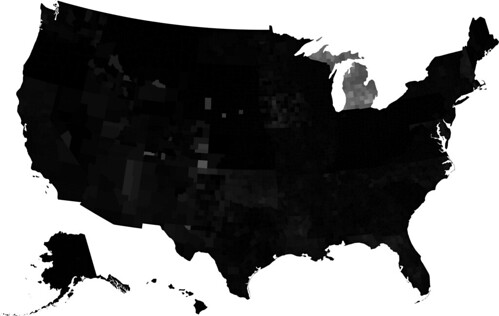sozobe wrote:Whoa. That guy's... thorough.
One of the things I like most about those maps is the way the states outline themselves so clearly. I mean, that's weird, really, when you think about it. State borders are just arbitrary lines in the sand, mostly. Population patterns cross borders.
Media markets cross borders. There's no immediately graspable rational reason why counties on one side of a state border would suddenly, collectively, have more Obama or Hillary supporters than those on the other side.
And yet there they are - especially in the West and Midwest, there's these sharp borders. Look at Kansas, or Illinois - cross the state border, and support for Obama is a factor higher:
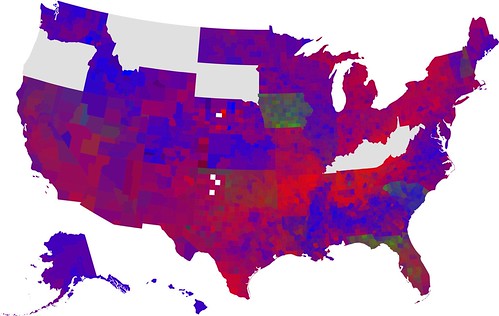
In the South and on the Atlantic coast you dont see the state lines so much, because two cross-regional demographic swathes crush them all: the "black belt" roughly along the coasts all in Obama-blue, and on the inside of that, the Appalachians all in Hillary-red.
(I finally found out why Arkansas, Missouri - the Ozarks - and Oklahoma are considered a kind of Appalachian diaspora; apparently there was a long standing migration trend from the Appalachians out West that way.)
But in the Midwest and West - even though that's where the state borders were drawn arguably most randomly - the political mood or discourse apparently really plays out significantly on some state-specific level, contained by the state borders.
Look, the B/W maps show it more clearly still. This is the Obama map again:
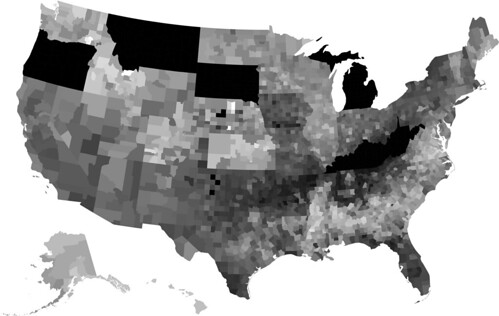
Now, it's only logical that Iowa is so much darker -- it was at the beginning of the campaign, Edwards still drew a lot of votes, it's a dark state for Hillary too. Same with NH vs Vermont up in New England. But look at Kansas! The sharp contrast between high Obama support within the state's borders with low Obama support right across the borders. Same with Illinois. Then look at Missouri in between, for the opposite effect.
Here, Clinton has her own clearly delineated state borders:
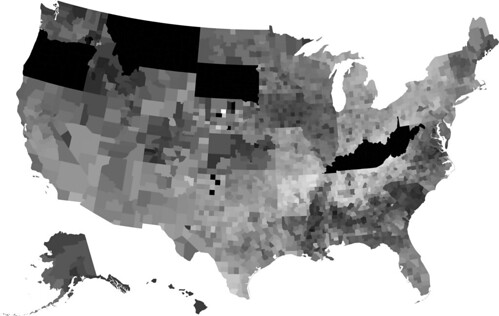
Arkansas - look at the Arkansas/Louisiana border. Missouri. Connecticut, darker than the surrounding states.
Here's Edwards again. That South Carolina, New Hampshire and Florida light up clearly is logical: that was when he was still in the race, so of course he still got more votes. But look at Oklahoma and Tennessee!
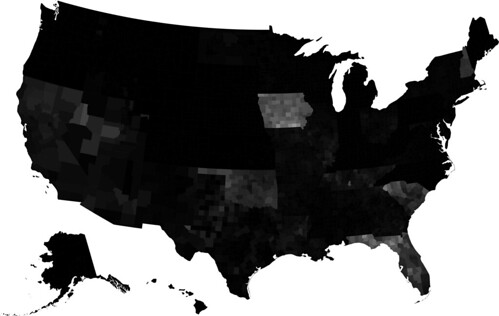
That was
after he got out of the race, on Super Tuesday - but he still got a lot of votes there, and for some reason his advantage neatly aligned with the state borders in both those states. Isnt that weird?
You even see a little bit of this with the other candidates (Richardson, Biden, Dodd, Kucinich etc). I didnt post that map cause it's so dark you have to kind of tilt your screen a little bit to make things out at all, but if you do you again see some states outlined - well, yeah, Michigan of course ("uncommitted") and the early states (IA, NH, FL, though not, interestingly, SC); but also Maryland (Biden?) and states with - I'm guessing - lots of conservative-minded white Dems who really didnt like either Clinton or Obama: Oklahoma, Louisiana, North Carolina:
